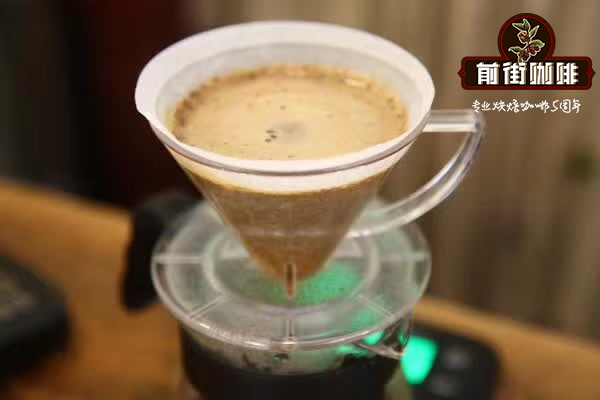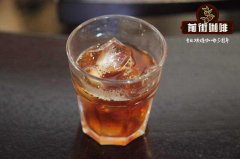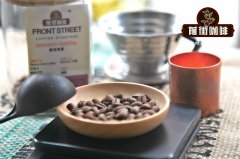The Story of Sumatran Coffee beans the origin of Manning Coffee

Professional coffee knowledge exchange more coffee bean information please follow the coffee workshop (Wechat official account cafe_style)
Indonesia is the largest archipelago country in the world. Arabica coffee was introduced into Indonesia as early as the Dutch rule in the 18th century. Mantenin is called "the most important coffee in the world". It is the fourth largest producing country in the world with an annual output of 7 million bags. Arabica accounts for only 10-15%, the main producing area is located in Sumatra? In Java and Sulawesi, coffee is harvested twice a year in May-June and September-October, respectively. The size of coffee farms is not about 1-3 hectares, with an average area of only 1.44 hectares. Coffee beans are almost the only crop on these small lands. They are the main source of income for 5 million local people, and there are few local manors or cooperatives acquired by Indonesian state-owned or private companies.
Coffee farmers remove the pulp by hand, a few use machines to remove the pulp, and then sell coffee beans directly in the local village market or send them to nearby concentration stations when the coffee beans are still very wet. Batak in Indonesia belongs to matrilineal society. Usually in the village market, women bring crops to do business, and their prices are very hard, so the prices of these coffee beans, which only deal with half of them in the domestic market, are very high. Even higher than coffee in Latin America and Africa, Indonesia has developed a unique shelling machine that can handle sheepskin beans with only 18% humidity, which turns the beans into a unique blue / green similar to the most strictly selected boutique beans. The export classification of high-quality Indonesian Arabica beans is manually screened, and these people are guaranteed by the government minimum wage and can earn higher bonuses based on performance.
Pure Manning is not an easy task in Indonesia. Most of the output comes from small holders of the local market, and even large estates cannot find an exporting company willing to handle and transport their coffee.
The Origin of Manning
The name "mandheling" is very different from other coffee beans. It is not the name of the producing area, place, port, or even the name of the coffee variety (such as Yegashifi or Sidamo is an African name). His name is just a phonetic error of the Indonesian mandheling people.
Why does this nation have anything to do with coffee? As a matter of fact, there is a legendary saga.
During World War II, Japan occupied Indonesia, and one of the Japanese soldiers drank extremely good coffee in a coffee shop. He immediately asked the shopkeeper the name of this cup of coffee, but because of the language gap, the shopkeeper thought he was asking, "where are you from?" So I answered: "mandheling".
After the end of the second World War, this Japanese soldier recalled that the "mantenin" he had drunk in Indonesia had asked an Indonesian broker to ship 15 metric tons of mantenin to Japan. As a result, it was very popular in the Japanese coffee market. So the name Mantenin has spread to this day. (the broker created Pwani Coffee Company, or PWN, a famous coffee company in Indonesia today, and is also the trademark owner of Gold Manning.)
END
Important Notice :
前街咖啡 FrontStreet Coffee has moved to new addredd:
FrontStreet Coffee Address: 315,Donghua East Road,GuangZhou
Tel:020 38364473
- Prev

Analysis on Gold Manning and Wet planing treatment of Indonesian Fine Coffee beans
Professional coffee knowledge exchange more coffee bean information Please pay attention to the coffee workshop (Wechat official account cafe_style) for those who like to drink coffee, they have long heard of Manning, especially the well-known golden manning, when it comes to golden manning, they will immediately think of Sumatra, because those who love Manning all know that Sumatra's golden man has the best aroma. But in fact,
- Next

Panamanian boutique coffee beans rose summer geisha, which is the right one?
Professional coffee knowledge exchange more information on coffee beans Please pay attention to the coffee workshop (Wechat official account cafe_style) geisha coffee beans, some people call it Rosa coffee or Yiqiao beans, they are all the same kind of coffee beans. Its name comes from Geisha Mountain in Ethiopia. It sounds like a Japanese geisha, hence its name. There is a period of geisha coffee beans.
Related
- Detailed explanation of Jadeite planting Land in Panamanian Jadeite Manor introduction to the grading system of Jadeite competitive bidding, Red bid, Green bid and Rose Summer
- Story of Coffee planting in Brenka region of Costa Rica Stonehenge Manor anaerobic heavy honey treatment of flavor mouth
- What's on the barrel of Blue Mountain Coffee beans?
- Can American coffee also pull flowers? How to use hot American style to pull out a good-looking pattern?
- Can you make a cold extract with coffee beans? What is the right proportion for cold-extracted coffee formula?
- Indonesian PWN Gold Mandrine Coffee Origin Features Flavor How to Chong? Mandolin coffee is American.
- A brief introduction to the flavor characteristics of Brazilian yellow bourbon coffee beans
- What is the effect of different water quality on the flavor of cold-extracted coffee? What kind of water is best for brewing coffee?
- Why do you think of Rose Summer whenever you mention Panamanian coffee?
- Introduction to the characteristics of authentic blue mountain coffee bean producing areas? What is the CIB Coffee Authority in Jamaica?

